History
Frideswide was the daughter of a 7th-century sub-king of Mercia named Dida of Eynsham whose lands occupied western Oxfordshire and the upper reaches of the River Thames. [3] When his wife Safrida died, Dida assisted his daughter in building a monastery, dedicating it to the Holy Trinity, the Virgin Mary and all the saints. Frideswide became the first abbess. The original nunnery founded by Frideswide was destroyed in 1002, [4] during the events of the St. Brice's Day massacre. [1] The king in recompense rebuilt it, and established secular canons there. [5]
Henry I gave the church with its endowments to Gwymund, a royal chaplain. In 1122 Gwymund installed Augustinian canons. [6] The second prior, Robert of Cricklade, wrote a book on miracles attributed to the intercession of Thomas à Becket. In 1336 the citizens of the town compelled the prior to forego the priory's special rights during the six days' fair beginning on St. Frideswide's day. [5] Baroness Montagu was a major benefactor of St Frideswide's.
In 1524, Cardinal Wolsey dissolved the Priory. Using funds from the dissolution of Wallingford Priory and other minor priories, [7] he then used its premises, together with those of other adjacent religious houses, to found a new college to be called Cardinal College on the land where the Priory once stood.
After Wolsey fell from power in 1530, King Henry VIII took over the nascent foundation, which he renamed Christ Church ("Aedes Christi"). The Church's five western bays of the nave made during the time of the Augustinian canons were demolished to make space to build the main quadrangle of the new college (now called Tom Quad). The intention was to demolish the remainder of the Church and replace it with a chapel on the north side of the quadrangle. That never happened, and the surviving portion of the Church, including the five remaining bays of the nave, became both the chapel for the new college, Christ Church and the cathedral for the new Diocese of Oxford which Henry VIII had separated from the Diocese of Lincoln.

Thomas Wolsey was an English statesman and Catholic cardinal. When Henry VIII became King of England in 1509, Wolsey became the king's almoner. Wolsey's affairs prospered and by 1514 he had become the controlling figure in virtually all matters of state. He also held important ecclesiastical appointments. These included the Archbishop of York—the second most important role in the English church—and that of papal legate. His appointment as a cardinal by Pope Leo X in 1515 gave him precedence over all other English clergy.
The Priory Church of Saint Mary, Bushmead, commonly called Bushmead Priory, was a monastic foundation for Augustinian Canons, located at Bushmead in the County of Bedfordshire in England. It is a Grade I listed building.
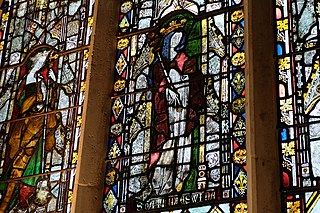
Frithuswith, commonly Frideswide, was an English princess and abbess. She is credited as the foundress of a monastery later incorporated into Christ Church, Oxford. She was the daughter of a sub-king of a Mercia named Dida of Eynsham whose lands occupied western Oxfordshire and the upper reaches of the River Thames.

Priory Church of St Mary, Bridlington, grid reference TA177680, commonly known as Bridlington Priory Church is a parish church in Bridlington, East Riding of Yorkshire, England, in the Diocese of York. It is on the site of an Augustinian priory founded in 1113 which was dissolved during the Dissolution of the Monasteries. In 1951 it was designated a Grade I Listed Building.

The Abbey Church of St Peter and St Paul, more usually called Dorchester Abbey, is a Church of England parish church in Dorchester on Thames, Oxfordshire, about 8 miles (13 km) southeast of Oxford. It was formerly a Norman abbey church and was built on the site of a Saxon cathedral.

Christ Church Cathedral is a cathedral of the Church of England in Oxford, England. It is the seat of the bishop of Oxford and the principal church of the diocese of Oxford. It is also the chapel of Christ Church, a college of the University of Oxford; this dual role is unique in the Church of England. It is administered by the dean of Christ Church, who is also the head of the college, and a governing body.
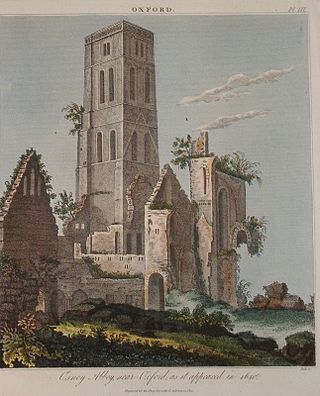
Osney Abbey or Oseney Abbey, later Osney Cathedral, was a house of Augustinian canons at Osney in Oxfordshire. The site is south of the modern Botley Road, down Mill Street by Osney Cemetery, next to the railway line just south of Oxford station. It was founded as a priory in 1129, becoming an abbey around 1154. It was dissolved in 1539 but was created a cathedral, the last abbot Robert King becoming the first Bishop of Oxford. The see was transferred to the new foundation of Christ Church in 1545 and the building fell into ruin. It was one of the four renowned monastic houses of medieval Oxford, along with St Frideswide's Priory, Rewley and Godstow.
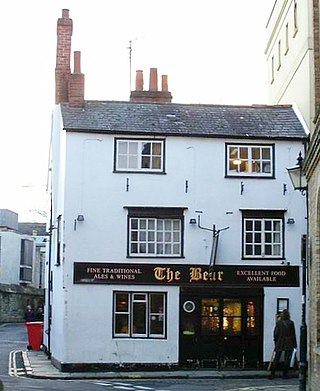
The Bear is a pub in Oxford, England, that was founded in 1774 as The Jolly Trooper. It stands on the corner of Alfred Street and Blue Boar Street, opposite Bear Lane in the centre of Oxford, just north of Christ Church, on the site of St Edward's churchyard. It was converted from the early 17th century residence of the stableman (ostler) for the coaching inn, The Bear Inn, which was on the High Street, Oxford. When The Bear Inn was converted into private housing in 1801, The Jolly Trooper changed its name to The Bear. There is a claim that by adopting its name, the current (1774) Bear Inn has acquired the history of the pub on the High Street, and so is one of the oldest pubs in Oxford. In 1952 the then landlord, Alan Course, started a collection of tie ends; a selection of the over 4,500 ties are on display around the pub. The tie collection was used as part of the plot of Colin Dexter's novel Death Is Now My Neighbour, in which Inspector Morse consults the landlord in order to identify a club tie. The building was Class II listed in January 1954.

Hatfield Broad Oak Priory, or Hatfield Regis Priory, is a former Benedictine priory in Hatfield Broad Oak, Essex, England. Founded by 1139, it was dissolved in 1536 as part of Henry VIII's dissolution of the monasteries.
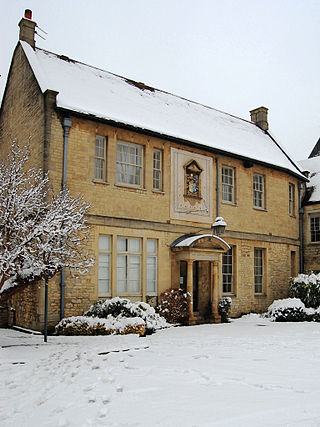
St Mary's College was a former college in Oxford, England. It is not to be confused with the two other colleges also named "St. Mary's", more commonly known as Oriel College and New College.

Forest Hill is a village in the civil parish of Forest Hill with Shotover, in the South Oxfordshire district, in Oxfordshire, England, about 4.5 miles (7 km) east of Oxford. The village which is about 330 feet (100 m) above sea level is on the northeastern brow of a ridge of hills. The highest point of the ridge is Red Hill, which rises to 440 feet (130 m) just south of the village. The 2011 Census recorded Forest Hill with Shotover's population as 856.
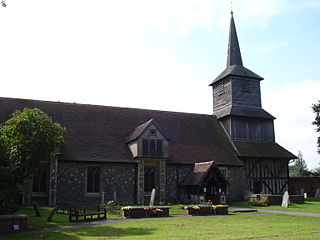
Blackmore Priory was a priory in Essex, England. It was established as an Augustinian Priory with a Prior and twelve Canons, who were not monks but ordained priests. They would be expected to work in the parish as well as lead a monastic life in the Priory.
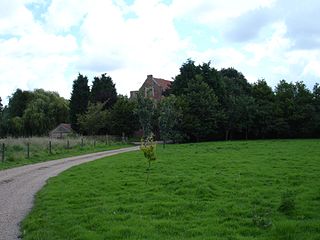
Tiptree Priory was a small Augustinian priory in Great Braxted, Essex, England and afterwards the name of the 16th century house built on the ruins.

Kirby Bellars Priory was a small priory of Canons Regular of Saint Augustine in Leicestershire, England. It is now the Church of England Parish Church of Saint Peter's serving the village of Kirby Bellars.
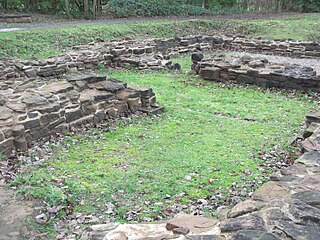
Sandwell Priory was a small medieval Benedictine monastery, near West Bromwich, then part of Staffordshire, England. It was founded in the late 12th century by a local landowner and was only modestly endowed. It had a fairly turbulent history and suffered considerably from mismanagement. It was dissolved in 1525 at the behest of Cardinal Wolsey – more than a decade before the main Dissolution of the Monasteries under Henry VIII.

Great Bricett Priory was a medieval monastic house in Great Bricett in Suffolk, England, the chapel of which is now in use as the Church of England parish church of St Mary and St Lawrence.
St Peter & Paul Priory, Ipswich was an Augustinian priory in Ipswich Suffolk, England.
Dida of Eynsham was a 7th-century sub-king of the Mercian territory around Oxford, near the Chilterns. Little is known of his life, although he is mentioned briefly in the various Anglo-Saxon chronicles, and he has been purported, since ancient times, to be the father of St Frideswide, patron saint of Oxford.
Robert of Cricklade was a medieval English writer and prior of St Frideswide's Priory in Oxford. He was a native of Cricklade and taught before becoming a cleric. He wrote several theological works as well as a lost biography of Thomas Becket, the murdered Archbishop of Canterbury.
Philip of Oxford was an Augustinian canon and head of the Priory of St Frideswide, Oxford.















